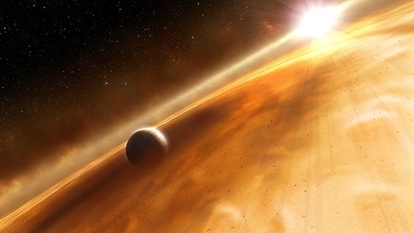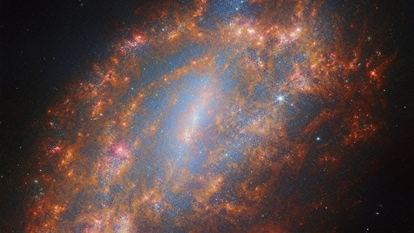Geomagnetic storm warning! Two dangerous sunspots pockmark the Sun, reveals NOAA satellite
The threat of geomagnetic storms has increased as two new unstable sunspots have appeared on the Earth-facing side of the Sun. NOAA satellite imagery has captured the active regions.






 View all Images
View all ImagesIt has been two days since the coronal mass ejection (CME) cloud narrowly missed the Earth. Astronomers predicted that the existing sunspots were not likely to pose any further threats to our planet as all of them began decaying and were losing their unstable delta magnetic field, which is responsible for solar flare eruptions. However, it might have been too early to celebrate as a National Oceanic and Atmospheric Administration (NOAA) satellite has spotted two new sunspots emerge on the Earth-facing side of the Sun. And one of them is large enough to produce X-class solar flares and issue fresh geomagnetic threats to the Earth.
According to a report by SpaceWeather.com, “A pair of new sunspot groups is emerging near the sun's southeastern limb. One of them is potentially large and could pose a threat for flares as it turns toward Earth later this week”. These sunspots, named AR3333 and AR 3334, are filled with unstable delta-class magnetic fields that can produce powerful solar flares.
Geomagnetic storms can strike the Earth later this week
If you have been wondering why there is such high solar activity in recent times, the reason is that the Sun is reaching the peak of its solar cycle. The Solar Maximum of the Solar Cycle 25 is expected to arrive by the middle of 2024, and with less than a year to go for it, solar activities have been ramping up.
This is why every month, the total number of sunspots and the frequency of geomagnetic storms and solar flare eruptions have been well ahead of the monthly average. Interestingly, the month of June has been quiet so far, but with the arrival of two new sunspots, that can change soon.
If the solar activity keeps intensifying, a G5-class geomagnetic storm can soon strike the Earth. uch a massively intense storm can damage GPS, impact mobile networks and internet connectivity as well as cause power grid failure. It can also cause malfunctions in our electronic devices.
For now, the Earth is just playing a waiting game but the Sun is sure to catch up soon enough.
NOAA's Sun monitoring system
NOAA monitors solar storms and Sun's behavior using its DSCOVR satellite which became operational in 2016. The recovered data is then run through the Space Weather Prediction Center and the final analysis is prepared. The different measurements are done on temperature, speed, density, degree of orientation, and frequency of the solar particles.
Catch all the Latest Tech News, Mobile News, Laptop News, Gaming news, Wearables News , How To News, also keep up with us on Whatsapp channel,Twitter, Facebook, Google News, and Instagram. For our latest videos, subscribe to our YouTube channel.




































